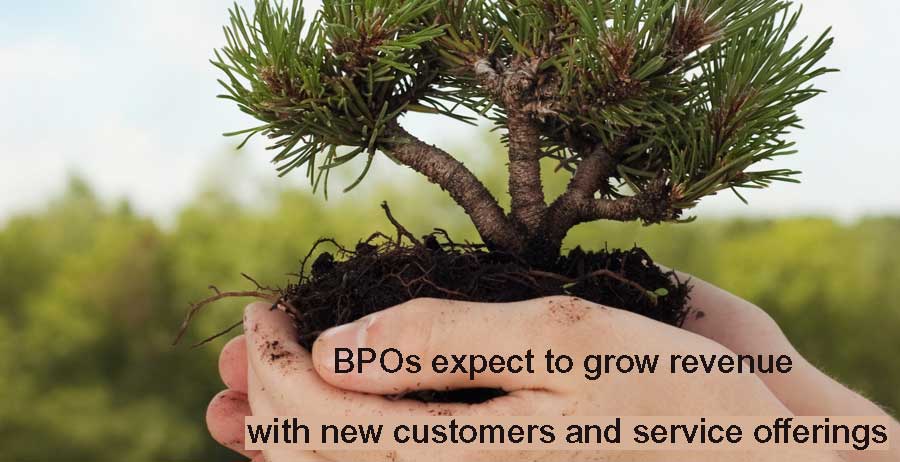April Poll of Large and Small BPOs
An April poll of BPOs shows they expect to grow revenue with new customers and expanded service offerings.
Parascript recently hosted a webinar for BPOs where document-oriented service provider attendees were polled on 2016/17 future growth areas. We found that they are looking to grow revenue through new customers and expanding service offerings. “New customers” typically means selling current offerings to new businesses while “expanding service offerings” typically includes working with new documents and data requirements.
Another significant source of ongoing revenue for BPOs that deal with documents could become data analytics. More specifically, this is revenue generated from providing predictive analytics using data extracted from business documents. Parascript employs a number of machine learning techniques to identify patterns within images. We apply these capabilities to perform OCR, handwriting recognition, invoice processing, cancer detection, and much more. This same technology also has applications in analyzing patterns not in images, but in other forms of data.
Predictive Analytics as Future Revenue Potential
There are plenty of examples of applying analytics to aid with identifying purchasing behavior and to predict future needs. Stories of scary levels of accuracy have popped-up including Target’s ability to predict when a certain woman was due to have a baby. Applying analytics on data can have unintended consequences, but it also has positive impacts of both increasing revenue and reducing costs. When applied to organizational needs, analytics on documents such as invoices and receipts can provide insights into the best times to make purchases and help control unnecessary spending.
Analytics and the Healthcare Claim
Let’s take a look at analytics applied to a very common document – the healthcare claim. Billions of these documents are processed annually by various business process outsourcers providing claims outsourcing services. The most common services related to claims processing are data capture, data quality, claim adjudication, and claims reconciliation. However, another level of service exists that could have a significant positive impact upon the healthcare industry: predictive analytics.
Applying pattern recognition to claims data can identify hidden patterns of patients who are continuously treated for the same maladies without even marginal success. Or, it can identify the likelihood of hospitalization based upon diagnoses and procedure codes along with other demographic data. Both of these capabilities can be applied to the output data streams of today’s claims processing services provided to insurance companies by BPOs. It is often assumed that an insurance company’s actuarial prowess means that they don’t need help with today’s progression towards patient-centered, outcomes-centered medical care. And yet, they do. Only a few insurance organizations have both the technology and the wherewithal to mine petabytes worth of data to improve patient services.
Unique BPO Business Insights
What if a BPO servicing these companies could offer business insights along with the data that they provide back to the carriers? These insights could highlight patients at-risk of hospitalization or patients that are in-need of specialist care. Insurance companies—through these added “insight services” provided by the BPO—can take a larger role in the active health management of its members and help save lives.
Parascript has a rich level of experience applying its proprietary machine learning and pattern recognition expertise to the data “beyond the image.”
Accessing Trapped Data
All of this data “trapped” in claims, invoices, receipts, and other transactional documents can add much more value through the application of analytics and provide a high-value revenue stream to BPOs. More value leads to a higher level of competitiveness.
So even though pattern recognition may be thought of as an “imaging technology”, its applications are many. Advanced ICR recognition technology may mean new rich sources of value-added services to BPO clients.

